National Pipe Thread (NPT) fittings are designed with tapered threads that tighten as they’re assembled. While this taper helps create mechanical strength, the connections alone are not watertight or airtight. Small voids remain between the threads, and without a sealant, these gaps can allow water, gas, or air to escape.
Thread sealants are the proven solution. They fill the spaces between threads, creating a leak-proof seal that withstands pressure, temperature changes, and vibration. Both professional plumbers and DIYers rely on thread sealants to finish jobs correctly, whether installing a water line, sealing a gas connection, or working with HVAC systems.
There are two main types of thread sealants:
- Plumber’s tape (also known as Teflon tape or thread sealant tape)
- Pipe joint compound (often called pipe dope or thread sealant paste)
Each has specific advantages and ideal applications. Choosing the right one and applying it properly is key to ensuring long-term system performance.
What Is Thread Sealant?
At its simplest, a thread sealant is any product applied to pipe threads to prevent leaks. These products also:
- Fill the gaps between male and female threads
- Provide lubrication for easier tightening
- Protect threads from galling, seizing, or corrosion
- Allow easier disassembly in the future
Thread sealants are used in residential plumbing, commercial projects, and industrial systems. Choosing the right one depends on the material, pipe size, and system type.
For more information on choosing between the two, see How to Select and Apply Pipe Thread Sealant.
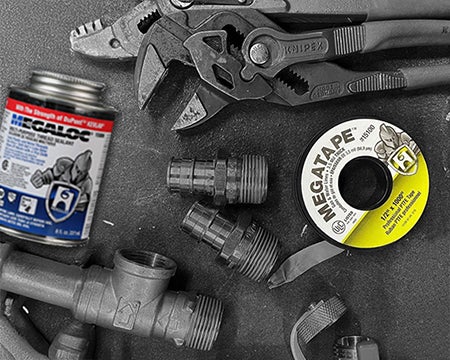
Thread Sealant Tape (Plumber’s Tape)
Thread sealant tape is a thin PTFE (polytetrafluoroethylene) film used to seal threaded pipe connections. Wrapped around male threads before assembly, it compresses into the thread roots as the fitting is tightened, creating a leak-free joint. It’s quick, clean, requires no curing time, and works across water, air, and gas systems with an indefinite shelf life.
Oatey makes color-coded tapes for specific uses: white for general plumbing, yellow for gas lines, pink for water lines, and gray to match fixture finishes. Using the right tape ensures compliance and durability, making it ideal for small to medium water lines, gas fittings, and quick plumbing jobs.
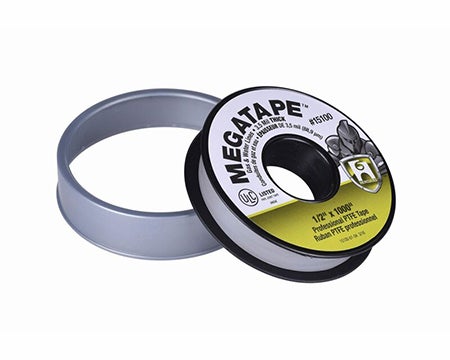
Pipe Joint Compound (Pipe Dope)
Pipe joint compound, often called “pipe dope,” is a thick paste applied to male threads before assembly. It fills gaps between threads, lubricates the joint, and helps create a reliable, leak-free seal. While it doesn’t protect the threads during assembly, it can help prevent seizing and makes future disassembly easier if needed.
This compound is commonly used on gas lines (with gas-rated formulas), steam and hot water systems, and industrial or commercial piping. It’s especially useful in applications exposed to heat, vibration, or thermal expansion. In many cases, pipe joint compound is used in combination with thread sealant tape to enhance sealing performance and ease of installation.
For more guidance on using pipe dope, see: Pipe Joint Compound (Thread Sealant Paste): Tips and Best Practices.
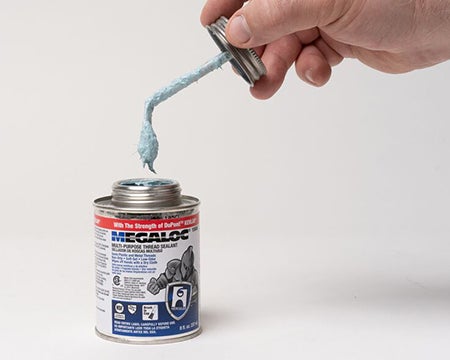
Plumber’s Tape vs Pipe Dope: Which Should You Use?
Many professionals keep both products on hand because each has distinct advantages. Here are some use cases on when to use each:
Small Water Lines
Plumber’s tape works best on small water lines and fittings under one inch. It is quick to apply, neat to work with, and provides a dependable seal for everyday plumbing connections.
Large Diameter or High-Pressure Pipe
For larger diameter pipes or systems operating under higher pressure, using both pipe joint compound and thread sealant tape together is often recommended. The tape helps with assembly and initial sealing, while the compound fills thread gaps to ensure a secure, leak-resistant connection. This combination provides dependable performance in demanding applications.
Gas Lines
Gas service requires sealants specifically rated for use with natural gas or propane. Yellow plumber’s tape and certain gas-rated compounds are designed for this purpose. Always check local code requirements before selecting a product.
Stainless Steel Connections
Gray thread sealant tape is often used for sealing stainless steel fittings, as it provides a cleaner, more uniform look and complements stainless steel finishes. A compatible pipe joint compound may also be applied to prevent galling and ensure a reliable, leak-free connection.
Using Both Together
Many professionals choose to use both products on larger or critical joints. The threads are wrapped with tape first and then coated with a thin layer of compound. This combination provides extra sealing strength and added protection.
For a comprehensive comparison, read Pipe Dope vs. Teflon Tape: Which Should You Use?.
How to Apply Thread Sealants
Applying Thread Sealant Tape
- Clean threads with a rag to remove dirt or rust.
- Start one to two threads back from the end of the pipe.
- Wrap clockwise, following the tightening direction.
- Overlap wraps by half the tape’s width, two to four times.
- Press tape into threads, then assemble immediately
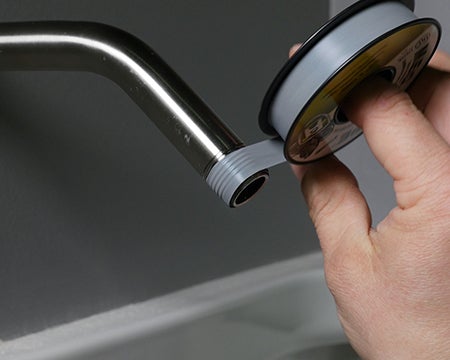
Applying Pipe Joint Compound
- Clean and dry threads thoroughly.
- Stir compound for consistent texture.
- Brush on a thin, even layer across male threads (not the first thread).
- Assemble the joint snugly; excess will push outward.
- Check cure time if required before pressurizing.
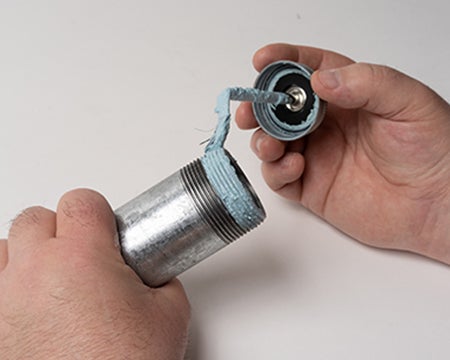
Tips for Getting a Leak-Free Seal
- Always clean threads before application.
- Match the sealant to the material and system.
- Leave the first thread bare to avoid contamination.
- Avoid overtightening; hand-tight plus one or two wrench turns is enough.
- Use leak detection solutions like Oatey® Megabubble to confirm seals.
Frequently Asked Questions
-
What is thread sealant?
-
A product (tape or compound) applied to pipe threads to fill gaps and prevent leaks.
-
-
What’s the difference between pipe dope and plumber’s tape?
-
Pipe dope is a paste applied with a brush, while plumber’s tape is a thin PTFE tape. Both prevent leaks, but they differ in application and best-use cases.
-
-
Can I use both tape and pipe joint compound?
-
Yes! Many plumbers do, especially on pressurized or larger fittings.
-
-
How long does thread sealant take to cure?
-
Tape requires no curing. Pipe dope may require curing depending on the formula—check the product label.
-
-
Does thread sealant expire?
-
Tape lasts indefinitely. Pipe joint compound can dry out, so check expiration dates.
-
-
Can I reseal fittings after disassembly?
-
Yes. Always clean off old tape or compound and reapply fresh sealant before reassembly.
-